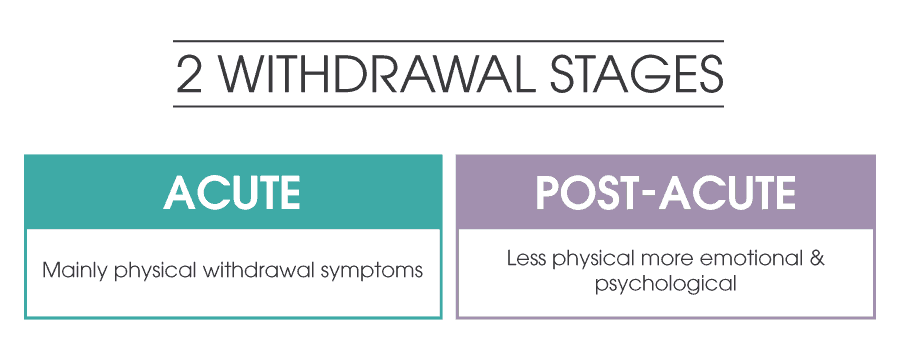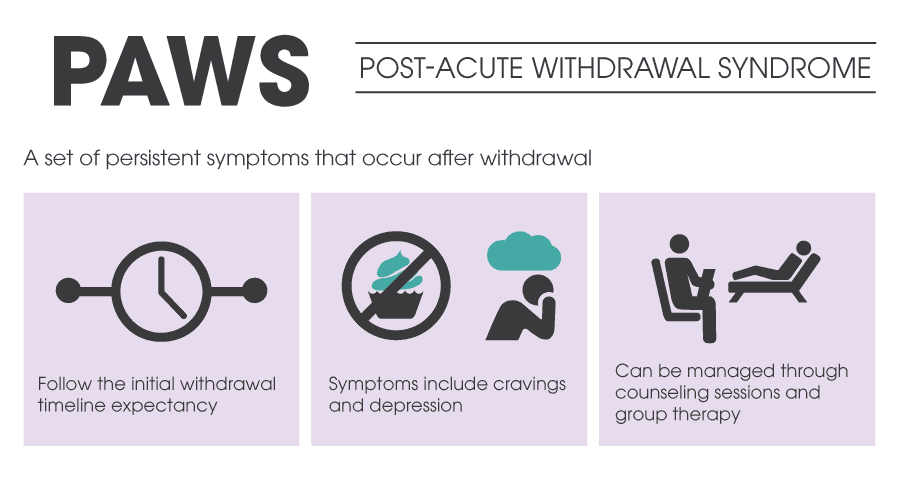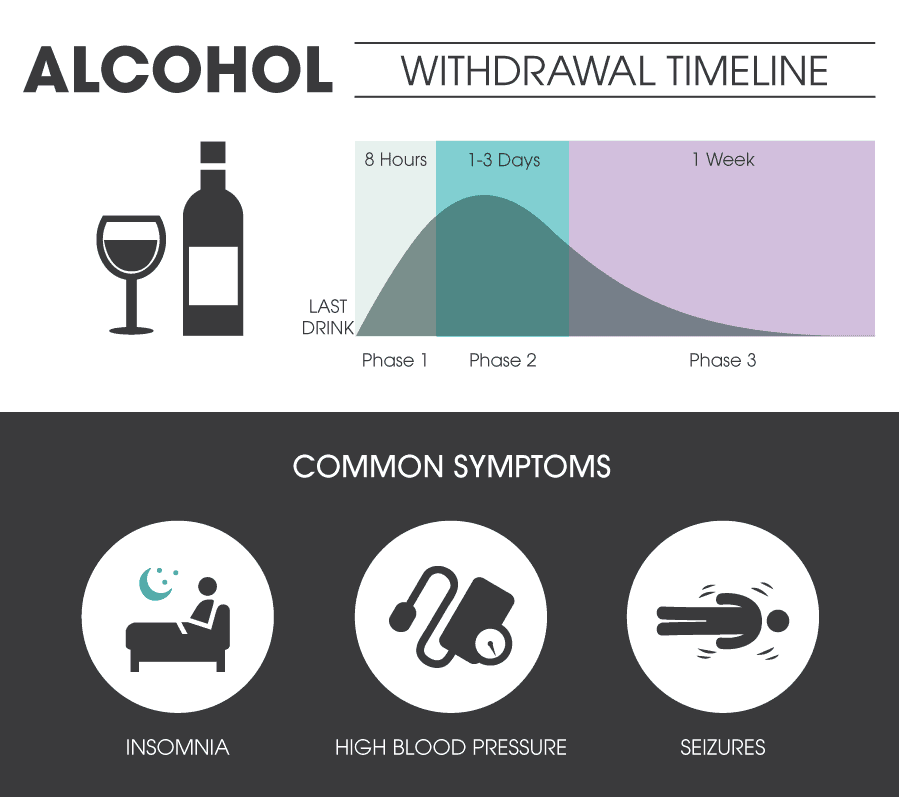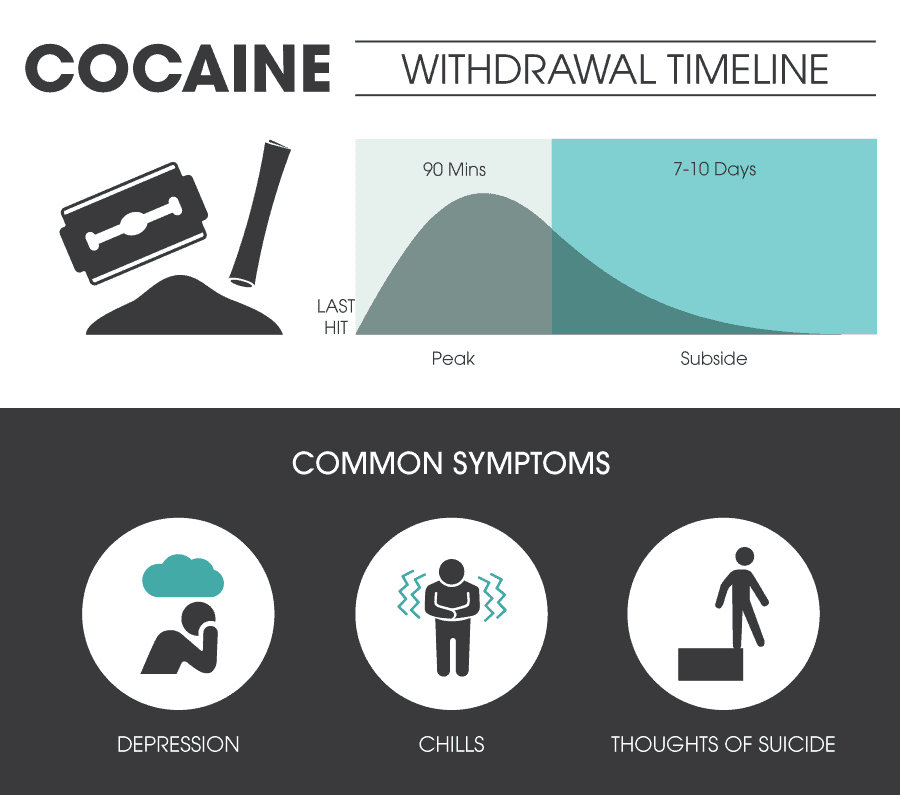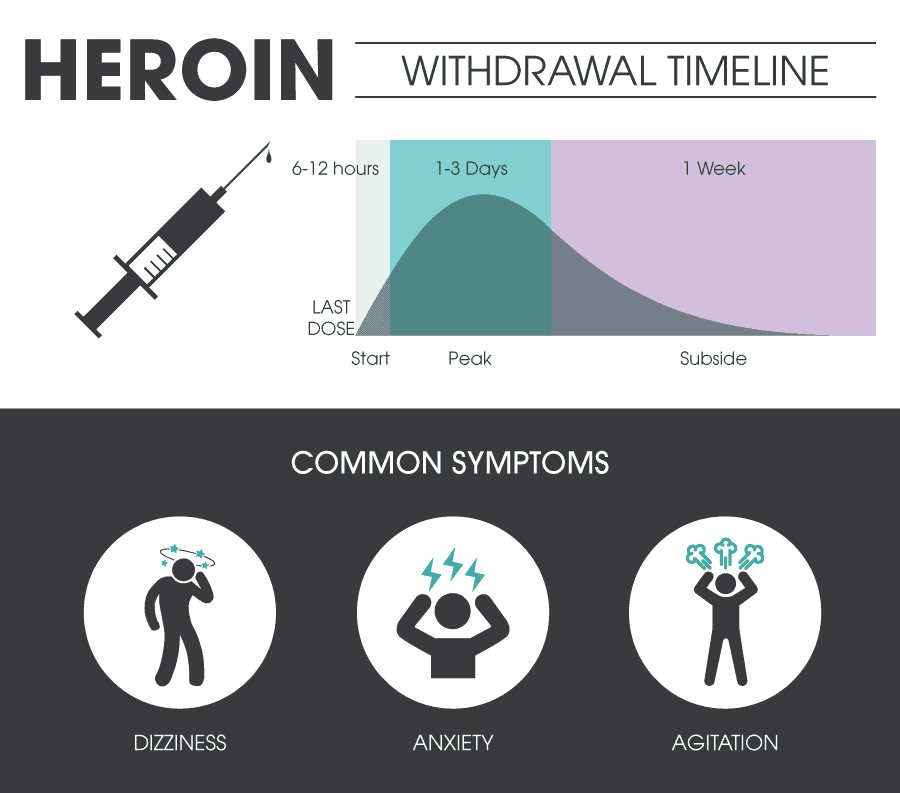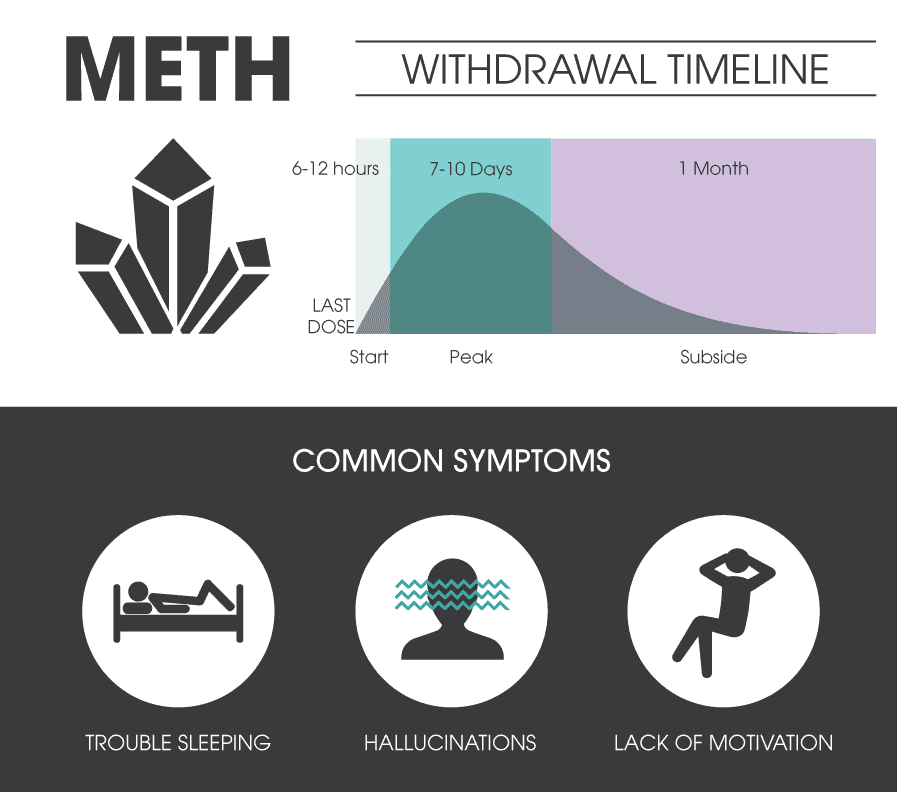Withdrawal is a major barrier to addiction treatment. People in the throes of an addiction battle will often find themselves unable to break away from the substance they are addicted to due to the fear of experiencing unpleasant and severe withdrawal symptoms. Withdrawal can vary depending on the type of substance, but it typically comes with uncomfortable physical and mental symptoms such as headaches, nausea, anxiety, depression, and intense cravings.
Fortunately, there are a variety of treatments available to help people struggling with addiction cope with the symptoms of withdrawal. Contact Northpoint Seattle at 888.483.6031 or via our online form to learn about addiction withdrawal treatment and take the first step of your recovery journey today.
Stages of Withdrawal
Withdrawal timelines vary from drug to drug. Some are said not to cause any withdrawal when you abstain while others have strong symptoms. This scale of withdrawal intensity coincides with how addictive a drug is considered to be. According to the National Institute on Drug Abuse, there are 28 common drugs that are abused in the US. Their detox timelines vary and some can be quite severe, requiring monitoring by addiction specialists. Alcohol and benzodiazepines can cause the most severe physical withdrawal symptoms. Cocaine would be the most intense for psychological withdrawal symptoms.
PAWS
With many of the addictive drugs that cause withdrawal, there may be a long-term effect called post-acute withdrawal syndrome. It will follow after the initial withdrawal timeline expectancy and happens to some addicts but not all. The symptoms include cravings and depression (from a depletion of serotonin, dopamine, or both). These symptoms can last for months or even years but can be managed through counseling sessions and group therapy. Here are the withdrawal timelines of the most commonly abused drugs.
“Quitting drugs and alcohol cold turkey can be dangerous due to varying withdrawal symptoms. Talk to one of our addiction specialists about our detox and rehab program today.”
1. Alcohol Withdrawal Timeline
There are three distinct stages when it comes to alcohol. They are as follows: During the first phase of alcohol withdrawal, you may experience things like anxiety or abdominal pain. This will often happen around 8 hours after your last drink. The second phase can cause your blood pressure to rise along with a rise in body temperature and heart rate. You may feel confused. This phase will often occur between 1-3 days since your last drink. During the third stage, you are at the greatest risk of serious health problems. Alcohol withdrawal can bring on delirium tremens which are seizures. You may hallucination and feel great agitation also. This is usually after 3 days or more since your last drink. Symptoms will begin to subside after about a week but often, it’s recommended that you have assisted detox if you were a long-time drinker.
2. Cocaine Withdrawal Timeline
Drug withdrawal from cocaine is intense and will come on 90 minutes after your last hit. The symptoms can last 7-10 days depending on how much and how often you use cocaine. Cocaine withdrawal can be managed with an outpatient program for some. For those who have tried to get past a cocaine addiction but have relapsed, it may be worth 24-hour supervision at a medical detox center. While this might come at a higher cost, cocaine is an expensive drug and challenging to walk away from. A major problem with cocaine withdrawal is that there is an increase of suicide. Intense depression and mood swings occur quickly. This is because the brain becomes accustomed to a constant flow of neurotransmitters that put you in a good mood. Cocaine prevents dopamine from being reabsorbed, flooding the brain and causing a high. When the brain loses the euphoric feeling, there is instant depression. A long period of cocaine abuse will cause the brain to lose its ability to produce dopamine and similar neurotransmitters that promote happiness. Cocaine has a short half-life so you’ll experience withdrawal quickly. Cocaine withdrawal symptoms will usually taper off after 7-10 days. You may experience sudden cravings for cocaine years after you stopped using it. Here are some of the common withdrawal symptoms:
- Fatigue
- Inability to feel pleasure.
- Depression or anxiety.
- Chills.
- Tremors.
- Nerve pain.
- Thoughts of suicide.
- Increase of appetite.
- Intense craving for cocaine.
- Vivid nightmares.
- Inability to think quickly.
3. Opiates Withdrawal Timeline
Various kinds of opiates are used, abused, and challenging to withdraw from. The opium plant is the natural chemical that heroin and prescription pain killer derive from. There are differences and various levels of severity, enough so that an inpatient/outpatient treatment center utilizes the opiate withdrawal scale. This is a means of measuring the physical dependence on any given opiate drug.
Heroin Opiate Withdrawal Timeline
Heroin is extremely addictive and comes with powerful withdrawal symptoms. This is why someone with a heroin addiction will go through opioid withdrawal treatment that includes opioid withdrawal medications. It’s important to get help from professional who know how to deal with opiate withdrawals. Although heroin withdrawal isn’t life threatening directly, the medical and psychological symptoms could cause a life-threatening situation. Heroin, being an opiate, suppresses functions of the central nervous system. This includes the heart rate, blood pressure, breathing, and your body temperature. It binds to opioid receptors which causes feelings of euphoria. When opiate withdrawal occurs, those feelings of happiness are gone. Heroin withdrawal symptoms last for about a week with severe symptoms that include:
- Dizziness
- Abdominal pain.
- Cold sweats.
- Feelings of anxiety and nervousness.
- Agitation.
- Depression.
- Muscle spasms.
- Intense cravings for opioids.
- Relapse is at high risk.
Medical detox will include medications that soothe symptoms, helping someone withdraw from heroin safely. Initial withdrawal symptoms start 6-12 hours after the last dose stops affecting the body. The most intense symptoms will be felt 1-3 days from abstaining. The intensity should taper off after about a week. Risk of relapse due to post-acute withdrawal syndrome with heroin can last for weeks or months.
Opioid Prescription Withdrawal Timeline
Opioid is an effective prescription pain killer. While it is not as addictive as heroin, a Percocet withdrawal can be fairly intense. Prescription opioids like codeine, Oxycodone (Percocet), and hydrocodone (Vicoden) are not as addictive as heroin due to their longer half-life but they have still contributed to the opioid abuse epidemic. Fentanyl. Methadone, and morphine also fall into the opioid category. The withdrawal symptoms are similar to heroin as they affect the brain in the same way. The symptoms are just not as intense as heroin. Many times, a doctor may instruct you on tapering off prescription pain killers. On average, opioid withdrawal symptoms will start between 1-2 days after use and last from 4-10 days. Longer-acting opioid drugs like Methadone can cause acute, intense symptoms for up to 3 weeks.
4. GHB Withdrawal Timeline
Gamma hydroxybutyrate (GHB) is a depressant for the central nervous system that is popular with young people going to clubs. It is used to treat narcolepsy and is being abused for its sedative, good feeling effects. Repeated use can lead to addiction and is often abused with other drugs. When you consistently use GHB, it can cause withdrawal which is dangerous. People that are legitimately addicted to the drug will need to go through assisted detox. There have been fatalities reported when people tried to withdraw from GHB. GHB withdrawal symptoms can include:
- Tremors or seizures.
- Insomnia.
- Sweating.
- Anxiety.
- Delirium and hallucinations.
- The breakdown of muscle tissue.
It’s common for people addicted to GHB to attend inpatient detox and rehab for up to two weeks. Benzodiazepines may be used to taper patients off GHB. They help sedate agitation and psychotic symptoms that can occur through withdrawal.
5. Inhalants Withdrawal Timeline
Teens all around the world are using inhalants and there is withdrawal symptoms that make it challenging to abstain. Even more challenging is that these vessels which hold the high so to speak are household items. Liquids that vaporize at room temperatures like paint thinners, gasoline, glues, and felt-tip markers. Sprays like deodorant, hair spray, vegetable oil sprays and spray paints can be used to get high. Gases like ether, chloroform, butane lighters, whipped cream dispensers and propane tanks are inhaled. Nitrites, which are compounds found in food preservatives affect the central nervous, brain and spinal cord. Leather cleaner and room deodorizers are being used as sexual enhancers. Inhalants can cause physical and psychological addiction. Users have reported that they had strong urges to continue using for days at a time. When someone is addicted to inhalants, their withdrawal symptoms include:
- Nausea.
- Cold sweats.
- Cramping in the muscles.
- Headaches.
- Agitation.
- Shaking and hallucinations.
- Convulsions have occurred in severe cases.
The physical symptoms will usually begin first within two days of stopping inhalants. After that, psychological symptoms will set in. It will usually last for up to 10 days and includes cravings, anxiety, and irritability.
6. Ketamine Withdrawal Timeline
Ketamine addiction is psychological because it alters opioid receptors in the brain similar to heroin or prescription pain killers. Ketamine withdrawal can cause emotional instability and you should be professionally managed. Withdrawal symptoms set in 1-3 days after the last dose of ketamine wears off. Initial symptoms include:
- Shakes.
- Fatigue.
- Insomnia.
- Rage.
- Hallucinations.
- Delusions.
- Seeing double.
- Nausea.
- Rapid breathing.
- Hearing.
From 4-14 days, the above symptoms will persist. They should start to taper off after 14 days. Some psychological problems may continue if there was nerve cell damage, a risk that comes with using ketamine. This brain damage may be permanent.
7. Kratom Withdrawal Timeline
Researchers aren’t certain on the full kratom withdrawal process as it has yet to be studied extensively. What they do know is the main chemicals that create the high resemble other opioid drugs. The symptoms aren’t considered life-threatening but there are medical complications that can occur during withdrawal from kratom. With all opioid withdrawal, a large risk is relapse. Tolerance has lowered during abstinence, there is a risk of overdose and death. Kratom withdrawal symptoms include:
- Complications.
- Intense cravings.
- Pain and aching in the muscles.
- Tremors.
- Problems sleeping.
- Changes in emotion.
- Anxiety that leads to irritability.
- Hostile behavior.
- A runny nose.
- Fever.
- Loss of appetite.
The kratom withdrawal Timeline hasn’t been studied extensively but again, working off what chemicals it contains, it’s suspected to be similar to an opioid withdrawal timeline. The main symptoms for opioid withdrawal will taper off anywhere from 7-10 days. It begins about 24 hours after the last dose. The acute stage includes cravings, anxiety, agitation, muscle aches, insomnia, and sweating. The symptoms will tend to get more intense during the 2-4 day period. Abdominal cramps, diarrhea, body chills, and dilated pupils are likely to occur. The symptoms then begin to subside after 7 days.
8. Marijuana Withdrawal Timeline
Marijuana withdrawal doesn’t physically affect you the way other drugs do but there is a psychological withdrawal occurrence. The symptoms aren’t dangerous but the can pose risks to those who use it often and try to withdraw with professional help. For those who use cannabis heavily, you may experience mood swings like anxiety and depression when you abstain. People with depression are more likely to use marijuana and become dependent on it. When someone with depression then withdraws from the drug, it can cause a spike in the feelings they were trying to avoid. Marijuana withdrawal symptoms include: The marijuana withdrawal timeline last anywhere from 1-7 days, depending on factors like how long you used, how often, and the intensity and type of marijuana.
- Stomach pain.
- Sweating.
- Tremors.
- Chills.
- Headaches.
- Restlessness.
- Inability to sleep.
- Exhaustion.
- No appetite.
- Moody such as irritability, anxiety, and depression.
Marijuana withdrawal can last longer than other drugs because of THC. It can stay in the body for several weeks where most withdrawal timelines last for just a few days. A total of 19 studies found that patients abstaining from marijuana experienced bazaar dreams and sleep issues for a minimum of 45 days.
9. MDMA and Ecstasy Withdrawal Timeline
Ecstasy isn’t addictive per se but it does wreak havoc on neurotransmitters. When you take MDMA, you flood the brain with serotonin. If you take ecstasy often, the body becomes used to a high level of neurotransmitters being released. When you go through ecstasy withdrawal, the body has a hard time functioning on these new low levels of neurotransmitters. This leads to withdrawal symptoms. However, because ecstasy affects the same neurotransmitter systems as other drugs of abuse, sudden changes in ecstasy dose after establishing a pattern of use can most certainly produce withdrawal symptoms. Ecstasy functions are much like a stimulant and hallucinogen. It is said to be similar to a stimulant-like withdrawal which include symptoms like:
- Fatigue.
- Loss of appetite.
- Depression.
- Trouble concentrating.
One-time ecstasy use can cause confusion and depressive symptoms with a withdrawal timeline that can last weeks. When adulterants are added into ecstasy, which is common, it can have further effects. You not only withdraw from MDMA but other chemicals as well.
10. Methamphetamine Withdrawal Timeline
Crystal meth is highly addictive, making withdrawal intense. The withdrawal timeline begins just a few hours after the last dose of meth taken. It can take up to 1 month for those who used meth heavily. Meth withdrawal includes physical and psychological symptoms and it usually occurs in those who use it chronically. The symptoms can be painful and traumatic, causing the user to continue use in order to avoid the withdrawal pains. These powerful withdrawal effects means users will need professional detox to get past their dependency to meth. Withdrawal from meth is an agonizing process when done alone. Detoxing under medical supervision helps people avoid dangerous health complications and decreases the risk of relapse. Once medical detox has taken place, an inpatient rehab center helps transition the person back to reality. Symptoms of withdrawal and their severity have to do with how the person used crystal meth. If they injected meth, the withdrawal process will be more intense and take longer. Also, there is a risk of co-occurring addiction like alcohol that may complicate withdrawal. Typical meth withdrawal symptoms include:
- Exhaustion.
- Agitation.
- Trouble sleeping.
- Paranoia.
- Hallucinations.
- Red, itchy eyes.
- Slurred speech.
- Lack of motivation.
- Thoughts of suicide.
Meth withdrawal timelines include initial symptoms that begin 1-3 days after your last use. Once day 4 hits, the symptoms will worsen. You may experience extreme anxiety and see things that aren’t there. The peak level can last for up to 10 days. Once you’ve made it past the mental havoc of hallucinations, insomnia begins. After about 11 days of abstinence, you won’t be able to sleep. This will last up to 30 days in which case, you’ll begin to feel somewhat normal. Depression often kicks in at this time because the dopamine levels are so low.
11. Benzodiazepines Withdrawal Timeline
Benzodiazepines withdrawal causes similar effects as alcohol and barbiturate withdrawal. There is a risk of delirium tremens because the drug has changed brain chemistry. Rohypnol is a benzo and although it’s best known as the date rape drug, it is also highly abused among users choosing to take it. Benzodiazepine withdrawal symptoms include:
- Stiffness.
- Weakness.
- Difficulty sleeping.
- Paranoia.
- Depression.
- Muscle tremors.
- Temporary hearing loss.
- Loss of appetite.
- Body aches.
- Sensitivity to light.
Long-term withdrawal syndrome can occur with benzodiazepines that affect neurological, intellectual, and cognitive functions. This can last for many months but research has found that any impairments go away after about a year. There are many variables when it comes to drug withdrawal timelines. Each drug and each circumstance alters the main withdrawal timeline details that are laid out. Some drugs may require professional detox assistance. What helps coming off opiates may not help subdue withdrawal symptoms of alcohol. It is important to get some kind of assistance through the initial withdrawal phase of whatever drug you’ve abused. Knowing what to expect and what type of treatment will help you through drug abuse makes it less intimidating. It also helps you stay on track when you know the withdrawal timeline. It can serve as motivation to know that your symptoms won’t last forever.
Find Help for Substance Abuse at Northpoint Seattle
If you or someone you know is struggling with substance use, it’s crucial to remember that there are people out there who can help. Whether it’s finding a support group, talking to a therapist, or seeking inpatient treatment, taking the steps to pursue recovery is a brave and commendable step. It’s never too late to start the journey towards sobriety. Contact Northpoint Seattle at 888.483.6031 or online for more information about our programs and services in Washington.
What Did you Think About This Blog?
Give it a Rating!


